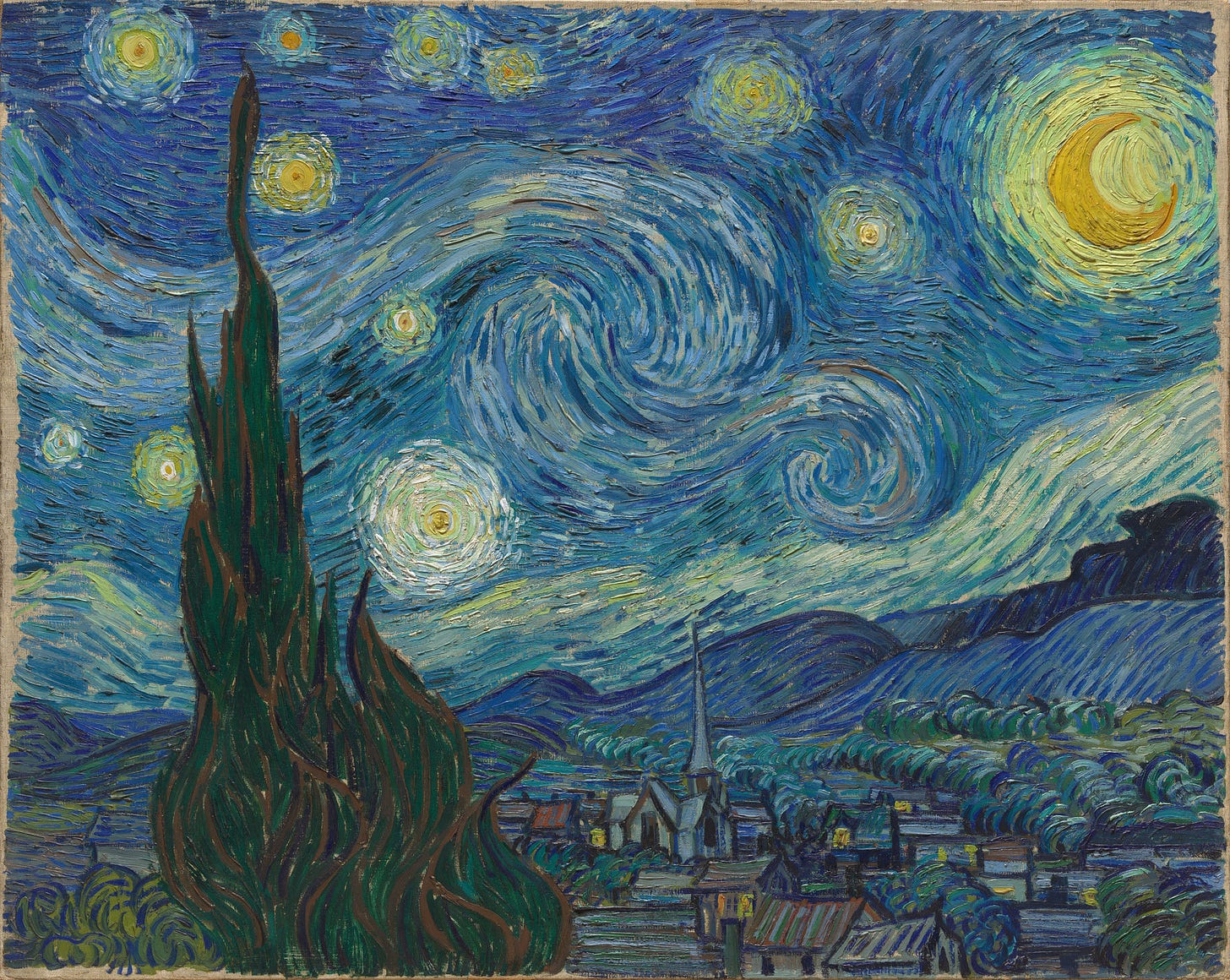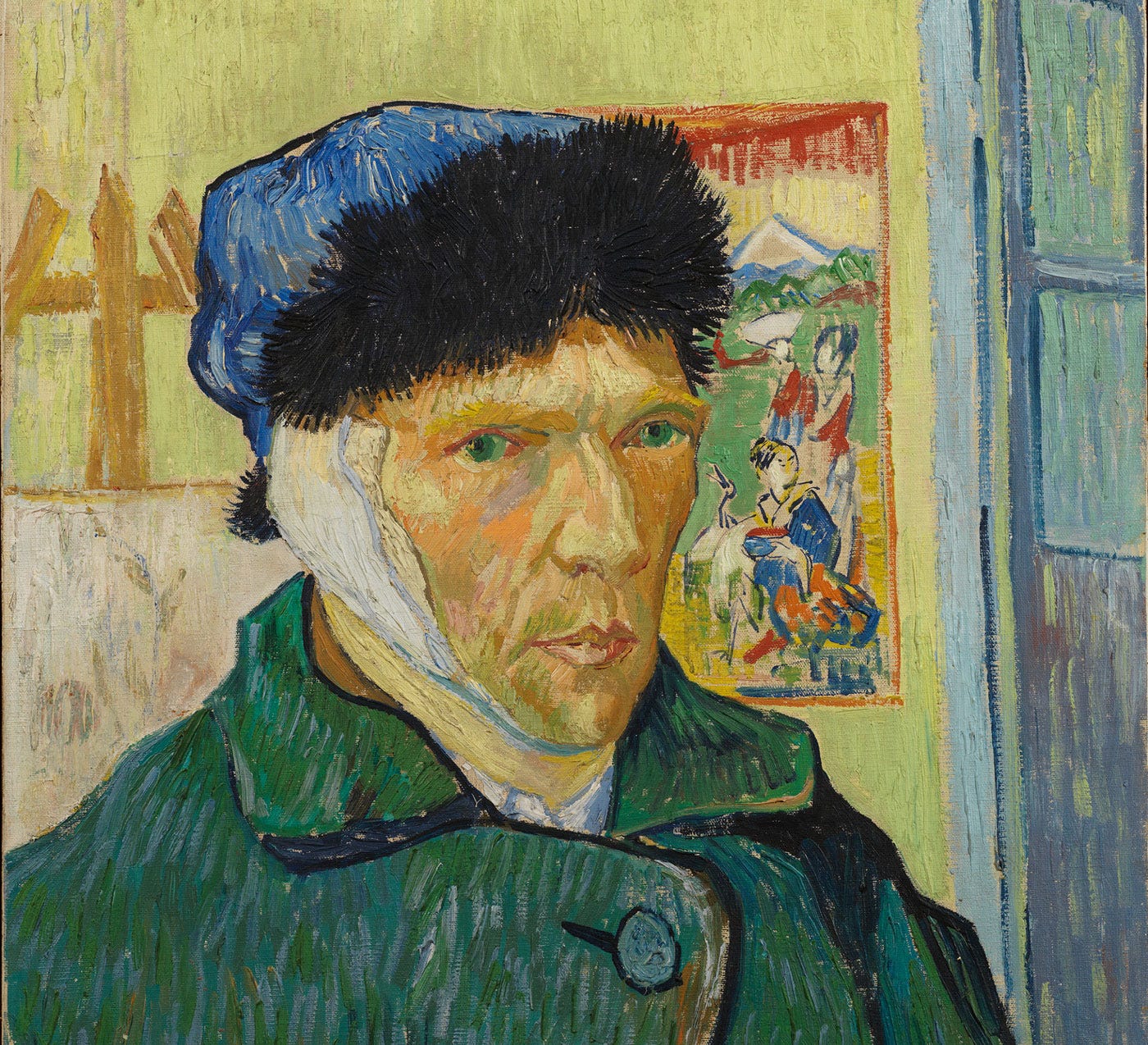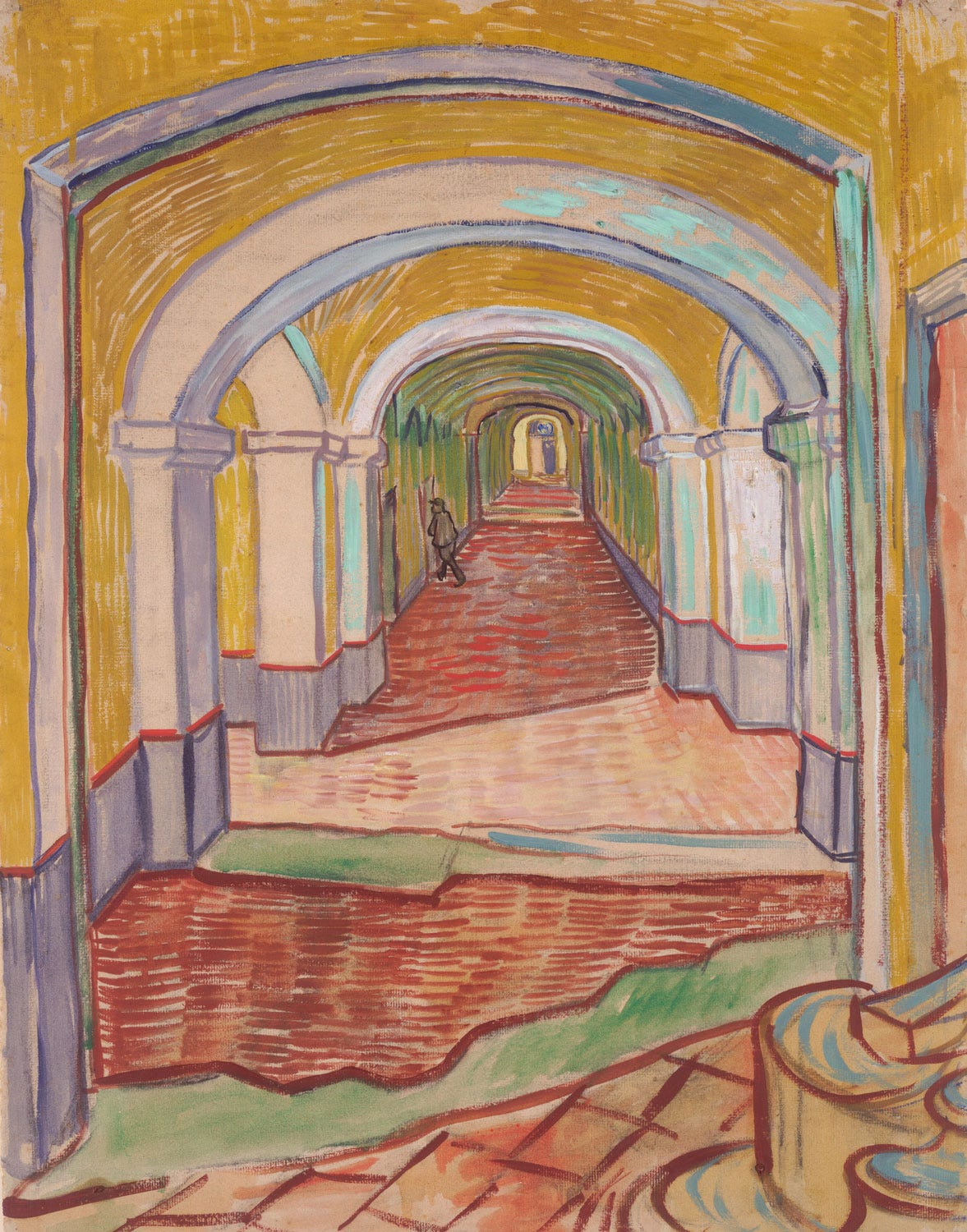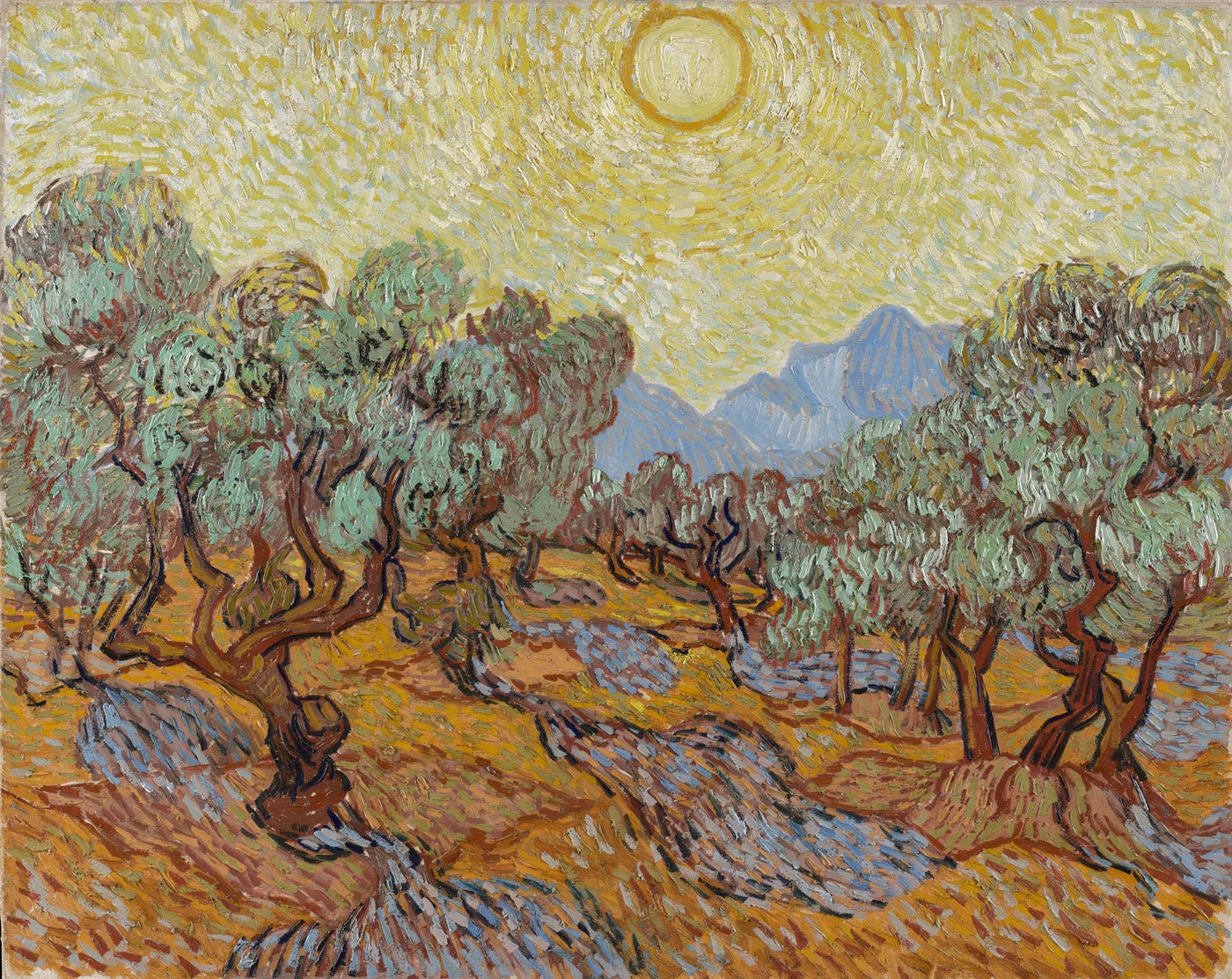Was Vincent van Gogh's 'craziness' the reason for his creativity?
Myth and reality of van Gogh's genius.
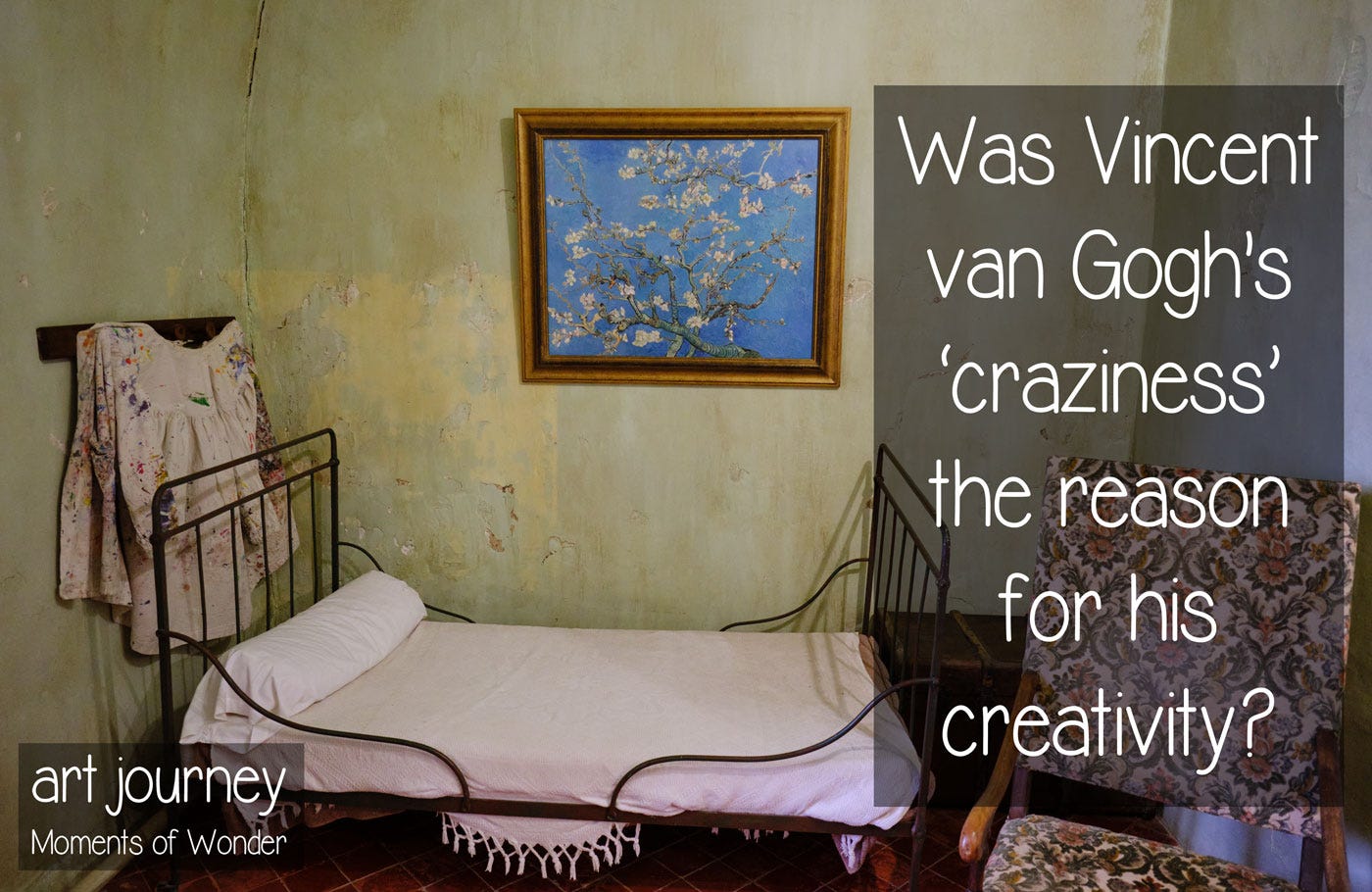
In the 1880s, to most people, paintings looking like a riot of color and visible brushstrokes could only have been painted by a mad artist.
Vincent did indeed have psychotic episodes, cut his ear, checked himself at the asylum, and, unfortunately, committed suicide.
Since then, the myth of the mad, tortured artist has only grown. And we still hear how sad it is that his humble dream of exhibiting in a café never came to pass.
As will be illustrated in a future story, this is entirely untrue.
Vincent van Gogh's paintings were exhibited at art shows in Paris and Brussels during his lifetime. He received glowing reviews and acclaim from fellow artists.
Here, we discuss the myth of the 'mad artist.'
Vincent van Gogh at the asylum
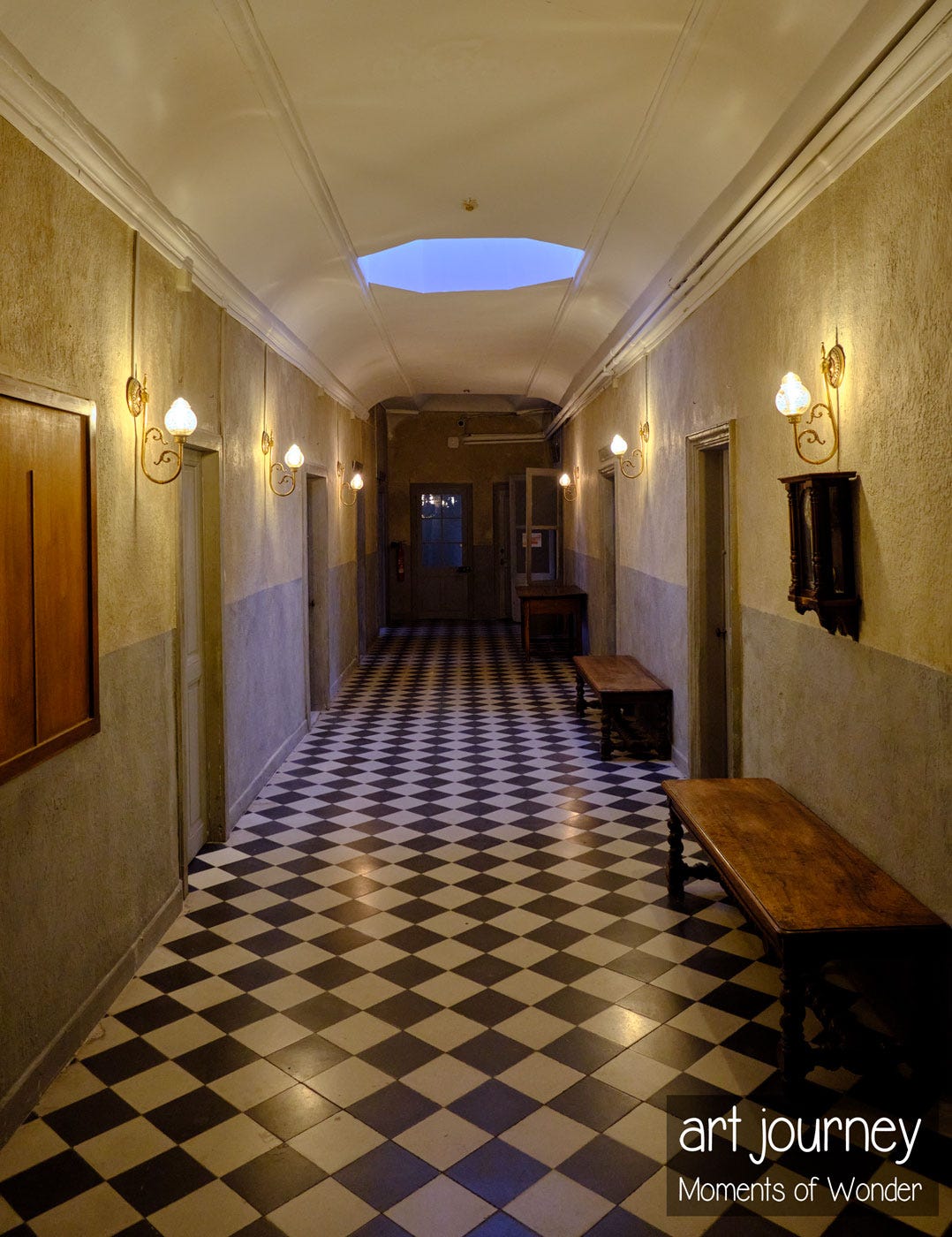
The first time I went to Saint-Paul de Mausole, I could hear someone repeatedly muttering the same thing behind the hedge. It was a patient, as this is still a psychiatric hospital.
Then, there was an exhibition of today's patients' artworks. It was poignant to realize that Vincent's memory at the asylum still lingers.
Patients are encouraged to create, and their artworks are for sale at the gift shop. This is fantastic, as it puts the healing power of art into practice.
Part of the asylum—a former monastery—is now an art center where art lovers can follow in Vincent's footsteps.
Some sections the public can visit are identical to Vincent's time or are reconstitutions, like the bedroom.
Trying to take in the atmosphere in Vincent's time, I pondered about the myth that van Gogh's 'madness' was the source of his creativity.
Were van Gogh's mental issues the cause of his talent?
To illustrate the myth of madness as the source of creativity, let me ask you, dear reader, a question:
In the 1960s, plenty of people took drugs, some of them famous for creating hallucinations that made them see new worlds, shapes, and colors.
Yet, how many of these people managed to create Sgt. Pepper's Lonely Hearts Club Band?
Illegal substances won't make you dream up Electric Ladyland. So don't even try—use art and music instead as a better way to get high.
In the case of madness being—or not—the source of his creativity, we have Vincent's own words.
In Arles, Vincent van Gogh was deemed a 'madman'
After the altercation with Gauguin and the cut-ear incident, some of Arles’ inhabitants petitioned van Gogh to be "confined in a special establishment."
The words they used were madman, insane man, increasingly mad, and this madman is becoming a threat to public safety.
Vincent responded in a letter to his brother Theo:
Here I am, shut up for long days under lock and key and with warders in the isolation cell, without my culpability being proven or even provable.
You can imagine how much of a hammer-blow full in the chest it was when I found out that there were so many people here who were cowardly enough to band themselves together against one man, and a sick one at that.
Vincent agreed to check himself voluntarily in Saint-Rémy 'insane asylum,' where he was to spend one year.
Vincent van Gogh knew he had problems but saw art as a cure
From the asylum, in his letters to Theo, he states:
Let me quietly continue my work, if it’s that of a madman, well, too bad. Then I can’t do anything about it.
Little by little I can come to consider madness as being an illness like any other.
Ah, if I’d been able to work without this bloody illness!
In other words, illness prevented him from working rather than being a source of creativity.
My dear brother—I’m still writing to you between bouts of work—I’m ploughing on like a man possessed, more than ever I have a pent-up fury for work, and I think that this will contribute to curing me.
I’m struggling with all my energy to master my work, telling myself that if I win this it will be the best lightning conductor for the illness.
And what can one do, there’s no remedy, or if there is it’s to work passionately.
After one episode where he ingested paint and turpentine, Vincent said
Working on my paintings is quite necessary to me for my recovery.
Was Vincent van Gogh a crazy artist?
The context of the 1880s is that Gauguin and Vincent van Gogh's work, with its vibrant colors, was utterly shocking for the average person.
This was not long after Manet, Monet, Renoir, and many others had been laughed at by the public and spat on by the press and when art dealers tried to prevent the sale of Impressionist paintings at auction.
Another way to illustrate the 'shock of the new' was when Gauguin wrote to Vincent from Brittany:
Of course, the collection of boors around here think I’m completely mad and I’m happy about that, because it proves to me that I’m not.
In 2016 the van Gogh Museum organized the symposium On the Verge of Insanity. Its conclusion was:
If we look at his life as a whole, we can certainly identify elements of borderline personality disorder, bipolar disorder, and—slightly less likely—epilepsy.
Yet not to such an extent that would justify referring to an illness.
Van Gogh did, however, drink too much alcohol and often ate poorly, causing all sorts of vitamin deficiencies.
As to the cause of psychosis:
What triggered his first psychotic episode? The aforementioned factors are likely to have contributed. And we also know that Van Gogh was under immense stress in the period prior to his first breakdown.
The combination of stress, excessive alcohol consumption and sleep deprivation might have caused the attack.
An astounding sensitivity, creativity, and productivity
Arriving in Provence, van Gogh was in awe:
I definitely want to paint a starry sky now.
It often seems to me that the night is even more richly coloured than the day, coloured in the most intense violets, blues and greens.
He also described his sensitivity:
Ah, while I was ill, damp, melting snow was falling, I got up in the night to look at the landscape – never, never has nature appeared so touching and so sensitive to me.
The emotions that take hold of me in the face of nature go as far as fainting, and then the result is a fortnight during which I am incapable of working.
And his ability to work:
Once I got out a little into the park I recovered all my clarity for work, I have more ideas in my head than I could ever put into action, but without it dazzling me.
The brushstrokes go like a machine.
And go like a machine he certainly did.
He spent one year at the asylum, two months of which he was incapable of working.
For the ten months left, he painted an average of one painting every two days. In Auvers-sur-Oise, in just over two months, Vincent did 77 paintings, over one per day.
How many artists produce an average of one masterpiece per day?
Not only that, but he was dragging, like a ball and chain, mental issues that slowed him down.
Meeting Vincent van Gogh
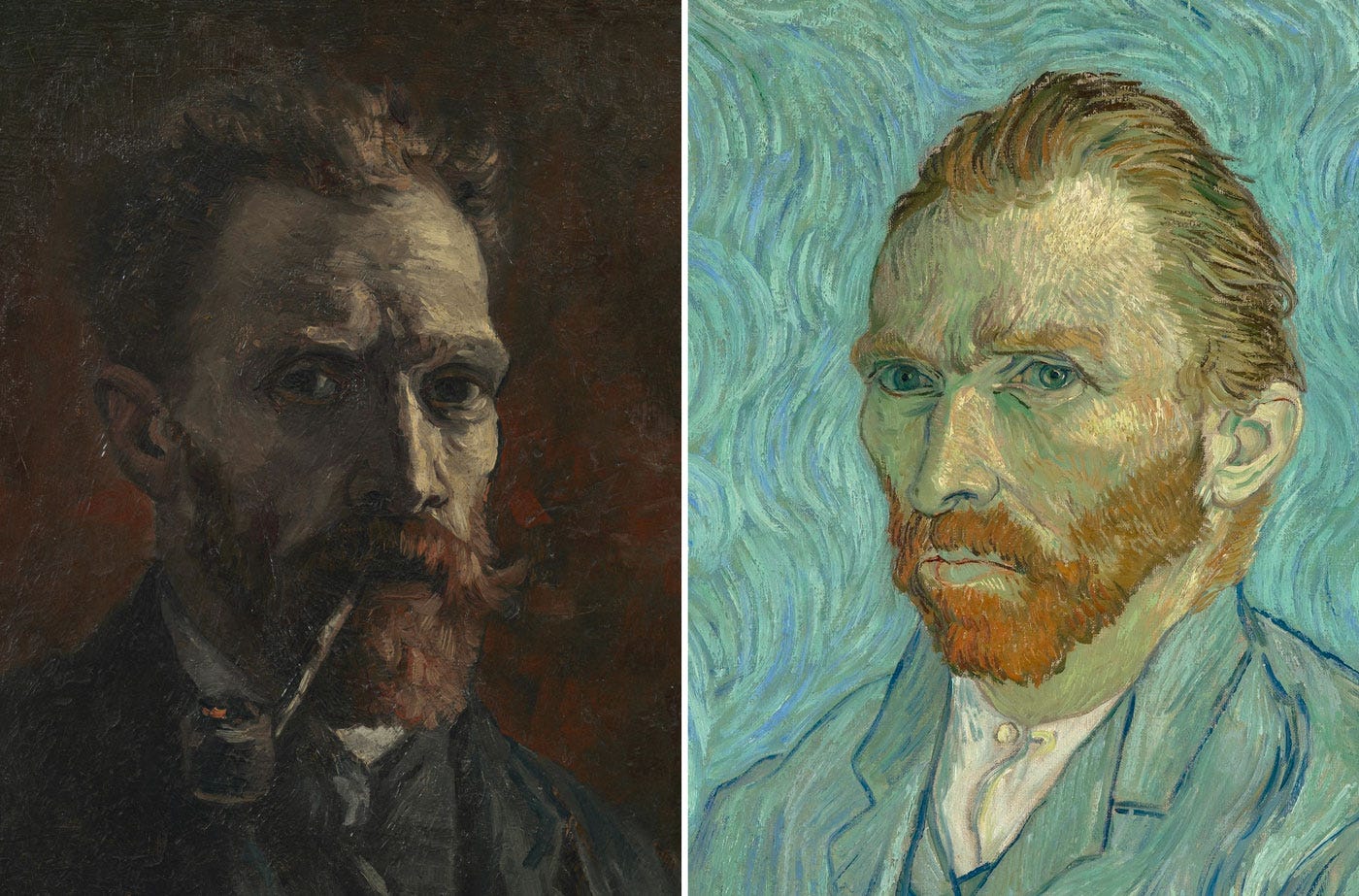
There is only one attested photograph of Vincent, taken when he was 19 years old. In any case, van Gogh expressed that a painted portrait was superior to a photo.
And we do have the 35 self-portraits he painted. They are an opportunity to meet him.
I would like to do portraits which would look like apparitions to people a century later.
So I don’t try to do us by photographic resemblance but by our passionate expressions, using as a means of expression and intensification of the character our science and modern taste for colour.
When he decided to become a painter, Vincent told us what he set out to do:
You must really understand how I regard art. One must work long and hard to arrive at the truthful.
What I want and set as my goal is damned difficult, and yet I don’t believe I’m aiming too high.
I want to reach the point where people say of my work, that man feels deeply and that man feels subtly.
What am I in the eyes of most people? A nonentity or an oddity or a disagreeable person—someone who has and will have no position in society, in short a little lower than the lowest.
Very well—assuming that everything is indeed like that, then through my work I’d like to show what there is in the heart of such an oddity, such a nobody.
This is my ambition, which is based less on resentment than on love in spite of everything, based more on a feeling of serenity than on passion.
Even though I’m often in a mess, inside me there’s still a calm, pure harmony and music.
When you have an opportunity to see a van Gogh self-portrait, take your time, and look. Peer into Vincent’s eyes.
This will allow you to go beyond the myth of the failed artist, the madman, and see calm, pure harmony, and music.
When you do, you will get a Moment of Wonder.
Sources
https://vangoghletters.org/vg/letters/let743/letter.html
https://vangoghletters.org/vg/letters/let750/letter.html
https://vangoghletters.org/vg/letters/let772/letter.html
https://vangoghletters.org/vg/letters/let800/letter.html
https://vangoghletters.org/vg/letters/let865/letter.html
https://vangoghletters.org/vg/letters/let767/letter.html
https://vangoghletters.org/vg/letters/let678/letter.html
https://vangoghletters.org/vg/letters/let853/letter.html
https://vangoghletters.org/vg/letters/let646/letter.html
https://vangoghletters.org/vg/letters/let879/letter.html
https://vangoghletters.org/vg/letters/let249/letter.html





